You may have recently seen harrowing headlines like “Russians Hack Elections System,” “Rigged Elections?” and “Is Our Democracy at Risk?” Your Utah elections officials would like to offer our own headline: “Rigged Elections? Not On Our Watch.”
Utah’s election officials are like momma bears, fiercely protective of the security and integrity of our elections systems. Here’s how these systems work, and why they’re safe.
Almost 75 percent of Utah’s votes are cast by mail. The Legislature and county clerks have implemented strict controls to ensure each ballot is safe, secure, and secret. Every single voter’s signature is verifiedby a trained elections worker. Every envelope is scanned before being counted, preventing a voter from submitting more than one ballot. Ballots are stored under lock and key, and at least two elections workers are present whenever ballots are handled or processed. Reconciliations are used throughout the process to ensure no ballot is lost, and no new ballots are introduced. Citizens are always welcome to watch and scrutinize this process. Observers always leave confident that the process is well
controlled.
You might think, these sound like good controls, but what about the system that totals the votes, and the transmission of election results? Are they safe?
Absolutely! Each county’s central counting server is located in a physically secure environment, and is not connected to the Internet or any other network. Ever. It compiles votes from the scanned paper ballots and from the touchscreen voting machines, tabulates the totals, and prints the results. This printed document is the official election record, and is kept by the county clerk.
Clerks transmit results to the Lieutenant Governor’s office via secure electronic methods. After validation by the state, clerks immediately compare the results to the county’s official record to ensure the transmission was accurate.
What about the voting machines at polling places? Can they be hacked remotely?
Nope. The voting machines at polling places are not networked, nor are they ever connected to the Internet. They don’t have modems, network cards, or Wi-Fi. Hacking would require separate physical access to each machine. Clerks store these machines in secure locations, with multiple pre-numbered
security seals to detect tampering. Poll workers check the seals and reconcile vote totals throughout the day to ensure the number of votes cast equals the number of voters who have checked in.
Each machine has a paper printout that shows the voter how their vote is being recorded. That paper trail allows us to compare the digital vote record with the physical record without compromising the voter’s secret ballot. Every county audits a sample of machines. In 11 years, there has never been a
discrepancy between what was recorded electronically and what was recorded on paper.
Your local election official is fiercely protective of your vote. Still not convinced? Come take a look! We’d love to walk you through the entire process. You’ll walk away, as hundreds already have, confident that your vote is indeed safe, secret, and secure, even from Russian hackers!
Submitted by: Utah’s 29 County Clerks and the Lieutenant Governor’s Elections Team
For more information, visit “Open Letter from the Nation’s Secretaries of State to Congress: Let’s Work Together to Share the Facts About Cybersecurity and Our Elections”.


